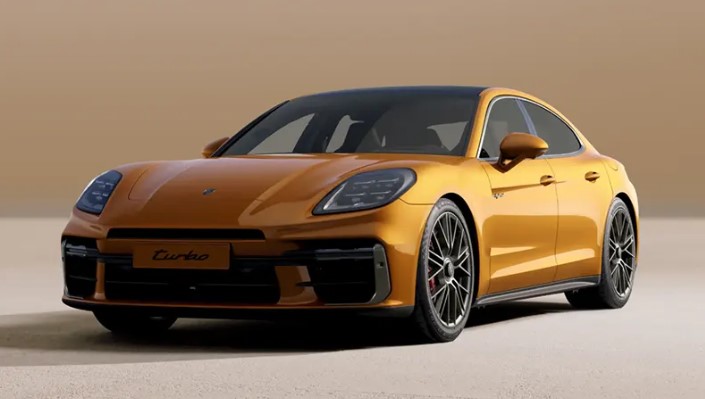The Porsche Panamera, a mid to full-sized luxury car, has been manufactured and marketed by the German automobile manufacturer Porsche since its debut at the 13th Auto Shanghai International Automobile Show in April 2009[1]. Spanning three generations, the Panamera uses a front-engine, rear or all-wheel drive configuration[1]. The name “Panamera,” similar to “Carrera,” is derived from the Carrera Panamericana race[1].
Porsche Panamera: Launch Details
Production of the Porsche Panamera began in April 2009, following its unveiling at the Shanghai Motor Show in China[1]. In 2011, Porsche launched hybrid and diesel versions of the Panamera[1]. A facelifted model was introduced in April 2013 at the Shanghai Auto Show, followed by the US introduction of the Panamera S E-Hybrid, a plug-in hybrid version, in November 2013[1]. The second-generation Panamera was launched in 2016, and the third generation was introduced in November 2023[1].
Porsche Panamera: Specifications and Design
The Porsche Panamera is a four-passenger, four-door luxury hatchback[1]. Its design and profile resemble the Porsche 911[1]. While the 911 is known for its performance-focused interior, the Panamera offers commodious dimensions with technological and luxury-oriented amenities[1].
The 2025 Porsche Panamera is available with a turbocharged 2.9-liter V6 engine that produces 348 horsepower[7]. The performance-oriented GTS model has a twin-turbocharged V8 engine with 493 horsepower[7]. Plug-in hybrid models, such as the 4 E-Hybrid and 4S E-Hybrid, offer even more power, with 463 and 536 horsepower, respectively[7].
The Panamera is 5049 mm long and 1937 mm wide and is a four-seater car[3]. It is available with an automatic transmission[3].
Porsche Panamera: Safety and Features
The Porsche Panamera comes standard with several key safety features, including an anti-lock braking system (ABS), driver and passenger airbags, and power steering[3]. Additional features include power windows in the front, automatic climate control, alloy wheels, and a multi-function steering wheel[3]. Rear-axle steering enhances performance and is suitable for everyday usability[5]. At lower speeds, the turning circle is reduced, increasing agility and making parking easier, while at higher speeds, driving stability is enhanced[5].
Porsche Panamera: Engine and Performance
The Porsche Panamera is available with multiple engine options, including a 2.9-liter V6 bi-turbo engine[3]. The engines are first assembled in Stuttgart, while the car’s body is built, painted, and assembled in Leipzig, Germany[1].
The Cayenne Turbo S E-Hybrid has a 4.0-liter twin-turbocharged V8 petrol engine plus an electric motor and a 17.9kWh lithium-ion battery pack[2]. The combined output of the electric motor and the twin-turbocharged V8 delivers nearly 680bhp[2]. The Cayenne Turbo S E-Hybrid can accelerate from rest to 62mph in less than four seconds, with a top speed of 183mph[2].
The 2025 Panamera and Panamera 4 are equipped with a turbocharged 2.9-liter V-6 engine producing 348 horsepower, paired with an eight-speed dual-clutch automatic transmission[7]. The GTS model features a twin-turbocharged V-8 engine with 493 horsepower[7]. The 4 E-Hybrid and 4S E-Hybrid plug-in hybrid models increase power to 463 and 536 horsepower, respectively[7].
Porsche Panamera: Technology and Features
The Porsche Panamera boasts several advanced technological features. Porsche Traction Management (PTM) is standard equipment, which sends power to the wheel with the most grip[2]. Porsche’s latest-generation infotainment system features a modern design and simpler menus[2].
Rear-axle steering is one of the features of the Panamera, enhancing both performance and everyday usability[5]. At low speeds, this system reduces the turning circle and increases agility, making parking easier, while at higher speeds, it enhances driving stability, resulting in greater maneuverability and driving safety[5].
Porsche Panamera: Efficiency and Practicality
Depending on the variant and fuel type, the Panamera can achieve a mileage of 20 kmpl[3]. The Cayenne Turbo S E-Hybrid Coupe offers a fuel economy of 68.9-74.3mpg and CO2 emissions of 87-92g/km[2]. The Panamera provides a boot space of 494 liters[3]. The Cayenne Coupe provides 1,400 liters of luggage space when the rear seats are folded down[2].
Rolls-Royce Phantom : From Ghostly Origins to Modern Masterpiece
Porsche Panamera: Price and Availability
The cost of the Cayenne Turbo S E-Hybrid Coupe starts at £136,400[2]. The Porsche Panamera is available in various models, each with its own price range[2].
Porsche Panamera: Mileage
The Porsche Panamera offers a mileage of 20 kmpl, depending on the variant and fuel type[3].
Porsche Panamera: Heritage and Evolution
The Porsche Panamera, now in its third generation, has evolved since its debut in 2009[1]. While it may differ from Porsche’s traditional lightweight, two-door, rear-engine sports cars like the 911, the Panamera has carved out its niche as a luxury-oriented, high-performance vehicle[1]. The Porsche 911 has evolved, with the new 992 model being better balanced and more agile than its predecessor[4]. Its interior is considered a “masterclass of ergonomics”[4]. Porsche manages to improve upon the 911 by carefully managing the icon, preserving its unique and distinctive features while updating what is old and flawed[4].

